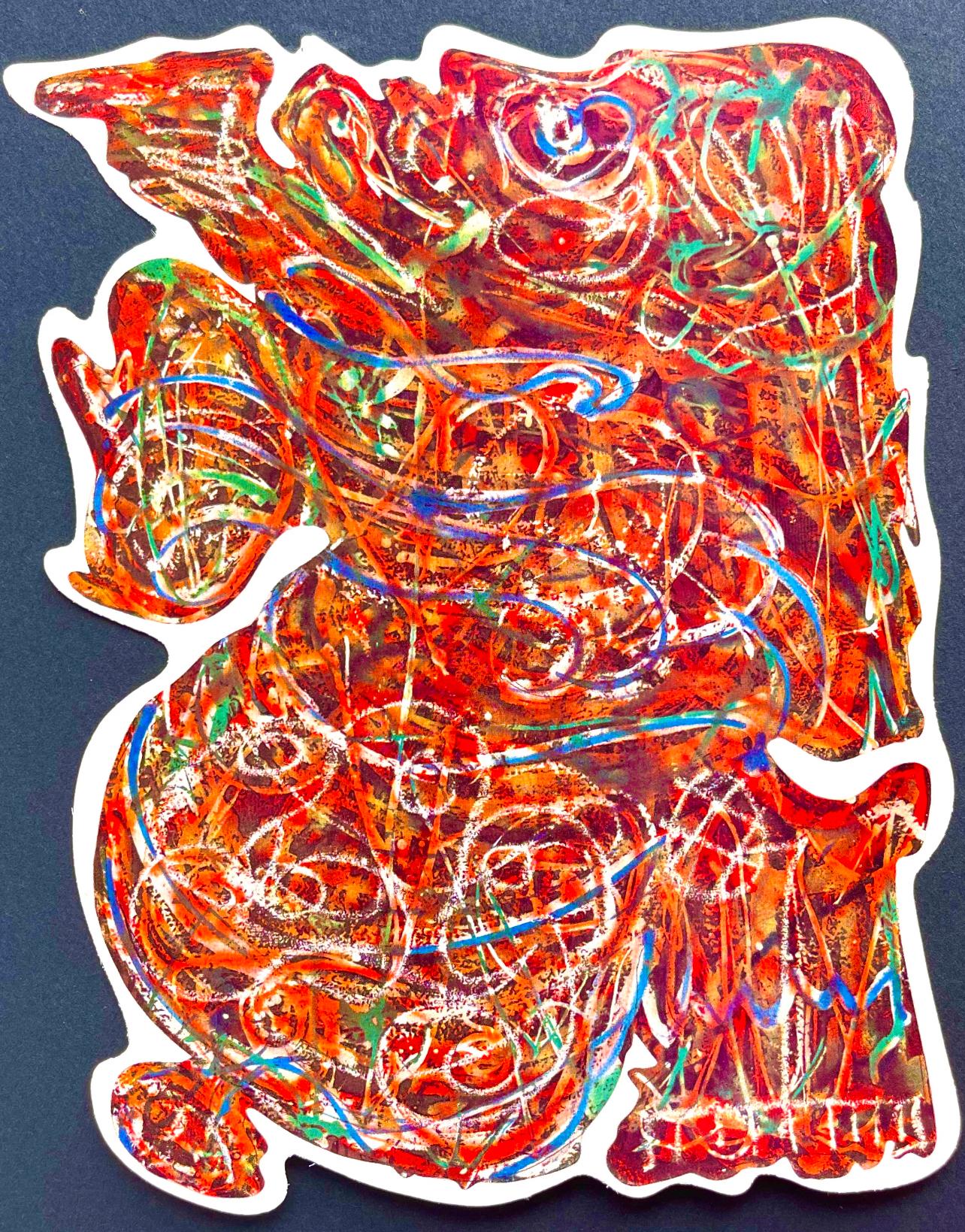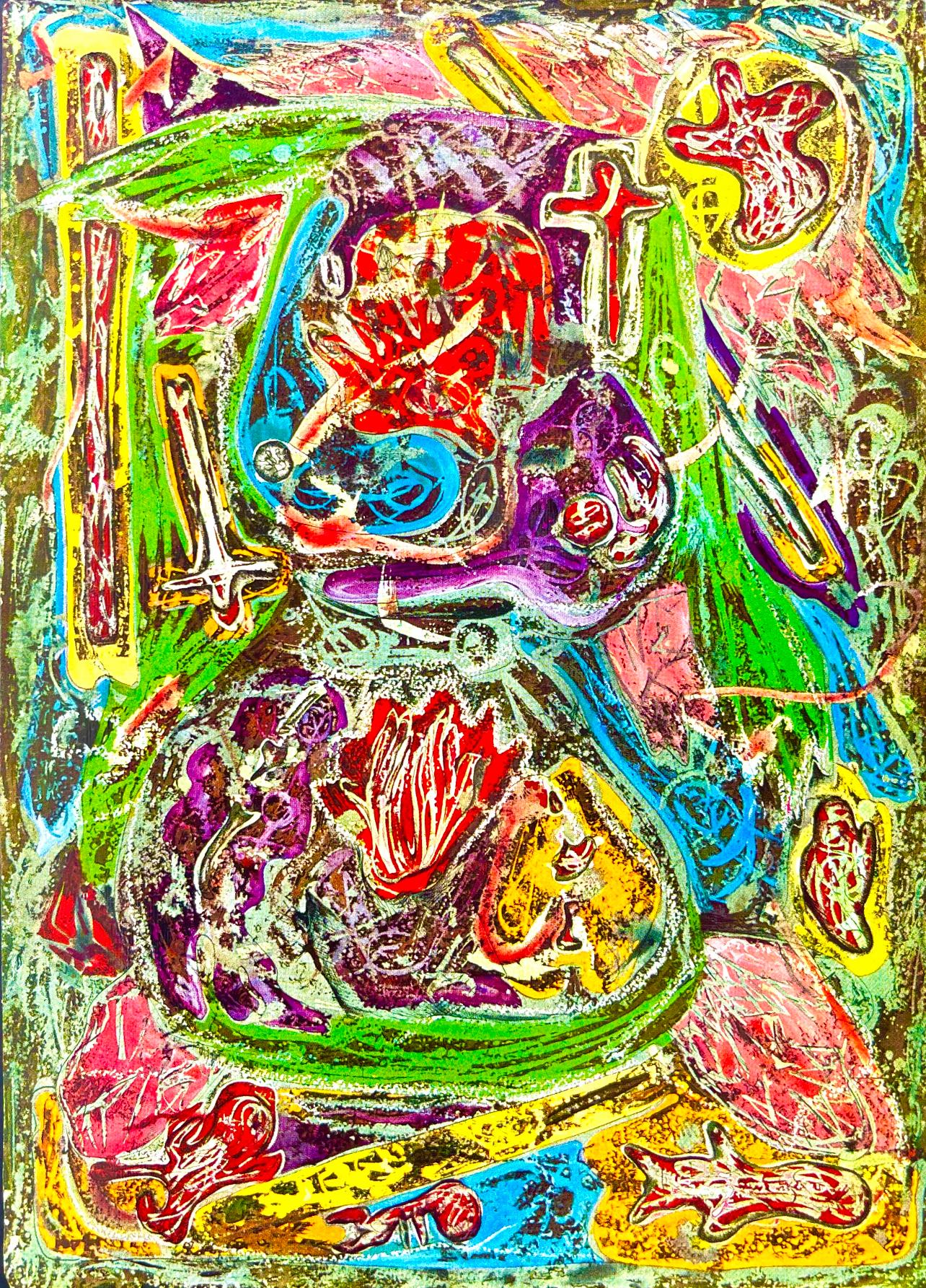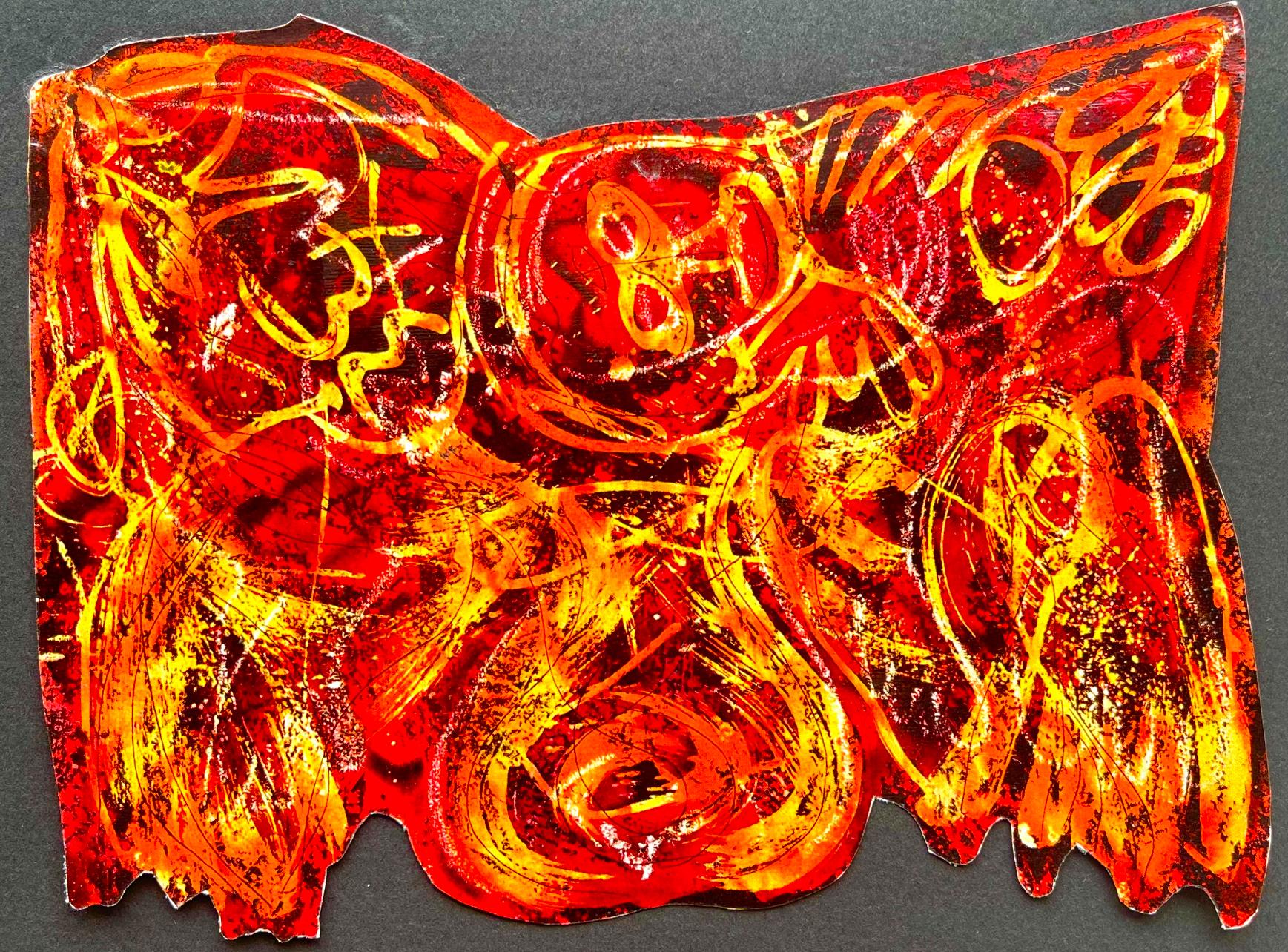Items Similar to Léger, Femme et enfant, Derrière le miroir (after)
Want more images or videos?
Request additional images or videos from the seller
1 of 9
Léger, Femme et enfant, Derrière le miroir (after)1955
1955
About the Item
Lithograph on wove paper. Inscription: Signed in the plate and unnumbered; text on verso, as issued. Good Condition. Notes: From Derrière le miroir, N° 79-80-81, published by Derrière le miroir, Paris; printed by Galerie Maeght, Paris, 1955. Excerpted from a Christie’s, New York lot essay, The life span of Derrière le Miroir was thirty-five years. Publication began in 1946. Aimé Maeght, initiator of Derrière le Miroir, had already made few attempts to start publications illustrated with fine printed lithographs in colours in the years prior to the launch of Derrière le Miroir. The name, Derrière le Miroir was suggested by Jacques Kober, manager of Galerie Maeght. The gallery had opened in 1945; the first number of Derrière le Miroir was released a year later. For this first issue Geer van Velde was invited to create lithographs to illustrate the publication. The lithographs in the first issue was printed by Mourlot, Paris. The first three issues of Derrière le Miroir were unsuccessful for Maeght as far as the edition size—the initial print-runs were far too large. From 30,000 for the first issue, the number was taken down to 10,000 for numbers two and three, until Derrière le Miroir number four was published in an edition of 1500. Maeght instituted a policy whereby unsold issues were recycled and used for the fabrication of new paper for the coming editions—this served to both conserve resources and also usually result in ultimate edition sizes far less than 1,500. With number four, the permanent format for Derrière le Miroir was established. Lithographs in colours were key; text was limited to comments on the featuring artist's exhibition taking place in the Galerie Maeght, and this catalogue format was defining to Derrière le Miroir. Galerie Maeght took on the leading role in Paris and presented all main artists including Braque, Matisse, Chagall, Léger, Bonnard, Chillida and many more. So too did Derrière le Miroir. The idea of a magazine was meanwhile still on the mind of Aimé Maeght. He found an insert as a solution. Two, and later four, pages of art review were inserted from 1952 onwards. In 1968 this find had ripened to independency and the dream of Aimé Maeght was now a tangible fact named l'Art vivant. Derrière le Miroir was on it's own again. Over 250 issues in a row. At that point publisher Aimé Maeght wished to make a mark with the publication of an hommage to all who once contributed to the magazine which came in the form of issue number 250, but was delayed by the death of Aimé Maeght. It was published after number 253 in 1982 and became a tribute to Aimé and Marguérite Maeght and 35 years of friendship with artists and poets. The era of Derrière le Miroir was closed with that final publication.
FERNAND LEGER (1881-1955) was a French painter, sculptor, and filmmaker. In his early works he created a personal form of cubism (known as "tubism") which he gradually modified into a more figurative, populist style. His boldly simplified treatment of modern subject matter has caused him to be regarded as a forerunner of pop art. Léger was born in Argentan, Orne, Lower Normandy, where his father raised cattle. Fernand Léger initially trained as an architect from 1897 to 1899, before moving in 1900 to Paris, where he supported himself as an architectural draftsman. After military service in Versailles, Yvelines, in 1902–1903, he enrolled at the School of Decorative Arts after his application to the École des Beaux-Arts was rejected. He nevertheless attended the Beaux-Arts as a non-enrolled student, spending what he described as "three empty and useless years" studying with Gérôme and others, while also studying at the Académie Julian. He began to work seriously as a painter only at the age of 25. At this point his work showed the influence of impressionism, as seen in Le Jardin de ma mère (My Mother's Garden) of 1905, one of the few paintings from this period that he did not later destroy. A new emphasis on drawing and geometry appeared in Léger's work after he saw the Cézanne retrospective at the Salon d'Automne in 1907. In 1909, he moved to Montparnasse and met Alexander Archipenko, Jacques Lipchitz, Marc Chagall, Joseph Csaky and Robert Delaunay. In 1910, he exhibited at the Salon d'Automne in the same room (salle VIII) as Jean Metzinger and Henri Le Fauconnier. In his major painting of this period, Nudes in the Forest, Léger displays a personal form of Cubism that his critics termed "Tubism" for its emphasis on cylindrical forms. In 1911, the hanging committee of the Salon des Indépendants placed together the painters identified as 'Cubists'. Metzinger, Albert Gleizes, Le Fauconnier, Delaunay and Léger were responsible for revealing Cubism to the general public for the first time as an organized group. The following year he again exhibited at the Salon d'Automne and Indépendants with the Cubists, and joined with several artists, including Le Fauconnier, Metzinger, Gleizes, Francis Picabia and the Duchamp brothers, Jacques Villon, Raymond Duchamp-Villon and Marcel Duchamp to form the Puteaux Group—also called the Section d'Or (The Golden Section) paintings, from then until 1914, became increasingly abstract. Their tubular, conical, and cubed forms are laconically rendered in rough patches of primary colors plus green, black and white, as seen in the series of paintings with the title Contrasting Forms. Léger made no use of the collage technique pioneered by Braque and Picasso.
- Creation Year:1955
- Dimensions:Height: 15 in (38.1 cm)Width: 11 in (27.94 cm)
- Medium:
- Movement & Style:
- After:Fernand Léger (1881-1955, French)
- Period:
- Condition:
- Gallery Location:Auburn Hills, MI
- Reference Number:1stDibs: LU1465213960012
About the Seller
4.9
Gold Seller
These expertly vetted sellers are highly rated and consistently exceed customer expectations.
Established in 2002
1stDibs seller since 2021
858 sales on 1stDibs
Typical response time: <1 hour
- ShippingRetrieving quote...Ships From: Clinton Township, MI
- Return PolicyA return for this item may be initiated within 1 day of delivery.
Auctions on 1stDibs
Our timed auctions are an opportunity to bid on extraordinary design. We do not charge a Buyer's Premium and shipping is facilitated by 1stDibs and/or the seller. Plus, all auction purchases are covered by our comprehensive Buyer Protection. Learn More
More From This SellerView All
- Ossorio, Composition, Peintures initiatiques d'Alfonso Ossorio (after)By Alfonso OssorioLocated in Auburn Hills, MILithograph on gloss vélin Johannot paper, hinged on black wove paper, as issued. Inscription: Unsigned and unnumbered. Good condition. Notes: From the volume, Peintures initiatiques ...Category
1950s Modern Abstract Prints
MaterialsLithograph
- Ossorio, Composition, Peintures initiatiques d'Alfonso Ossorio (after)By Alfonso OssorioLocated in Auburn Hills, MILithograph on gloss vélin Johannot paper, hinged on black wove paper, as issued. Inscription: Unsigned and unnumbered. Good condition. Notes: From the volume, Peintures initiatiques ...Category
1950s Modern Abstract Prints
MaterialsLithograph
- Ossorio, Composition, Peintures initiatiques d'Alfonso Ossorio (after)By Alfonso OssorioLocated in Auburn Hills, MILithograph on gloss vélin Johannot paper, hinged on black wove paper, as issued. Inscription: Unsigned and unnumbered. Good condition. Notes: From the volume, Peintures initiatiques ...Category
1950s Modern Abstract Prints
MaterialsLithograph
- Ossorio, Composition, Peintures initiatiques d'Alfonso Ossorio (after)By Alfonso OssorioLocated in Auburn Hills, MILithograph on gloss vélin Johannot paper, hinged on black wove paper, as issued. Inscription: Unsigned and unnumbered. Good condition. Notes: From the volume, Peintures initiatiques ...Category
1950s Modern Abstract Prints
MaterialsLithograph
- Derain, Composition, Salomé, The Limited Editions Club (after)By André DerainLocated in Auburn Hills, MILithograph, Stencil on wove paper. Inscription: Unsigned and unnumbered. Good condition. Notes: From the volume, Salomé published by The Limited Editions Club, Paris; rendered by Jea...Category
1930s Modern Abstract Prints
MaterialsLithograph, Stencil
- Ossorio, Composition, Peintures initiatiques d'Alfonso Ossorio (after)By Alfonso OssorioLocated in Auburn Hills, MILithograph on gloss vélin Johannot paper, hinged on black wove paper, as issued. Inscription: Unsigned and unnumbered. Good condition. Notes: From the volume, Peintures initiatiques ...Category
1950s Modern Abstract Prints
MaterialsLithograph
You May Also Like
- Some People TogetherBy Karel AppelLocated in New York, NYSome People Together, 1974 Hand-signed and dated in pencil Color lithograph and screenprint Sheet 22 x 29 3/4 inches; 559 x 756 mm. Edition 110Category
1970s Modern Abstract Prints
MaterialsLithograph, Screen
- Le Reve de ParisBy Marc ChagallLocated in New York, NYMarc Chagall Le Rêve de Paris (Paris Dream), 1969-70 Color lithograph on Arches wove paper 35 3/8 in x 25 1/4 in (90 cm x 64 cm) 40 1/8 in x 28 1/8 in (101.8 cm x 71.5 cm) Numbered f...Category
1960s Modern Figurative Prints
MaterialsLithograph
- Some People TogetherBy Karel AppelLocated in New York, NYSome People Together, 1974 Hand-signed and dated in pencil Color lithograph and screenprint Sheet 22 x 29 3/4 inches; 559 x 756 mm. Edition 110Category
1970s Modern Abstract Prints
MaterialsLithograph, Screen
- Edward Sacks, Seated FigureLocated in New York, NYLittle is known about the artist, Edward (Ed) Sacks, although this print may have been made at the Art Students League in NYC. it is a cross between, as the title suggests, a Seated ...Category
1940s American Modern Figurative Prints
MaterialsLithograph
- Tête de Femme (Fribourg livres illustrés 25; Duthuit 23), 1948, Henri MatisseBy Henri MatisseLocated in Fairfield, CTArtist: Henri Matisse (1869-1954) Title: Tête de Femme Year: 1948 Medium: Lithograph on Chine Appliqué (China paper mounted on wove paper) Size: 9.75 x 7.50 Condition: Excellent Insc...Category
1940s Modern Abstract Prints
MaterialsLithograph
- Jeune Fille au ChatBy Léonard Tsuguharu FoujitaLocated in New York, NYA very good impression of this color lithograph. Artist's proof, aside from the edition of 220. Signed and inscribed "E.A." in pencil by Foujita. Printed by the Guilde de la Gravure,...Category
1950s Modern Abstract Prints
MaterialsColor, Lithograph





